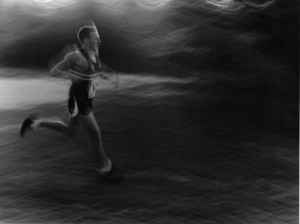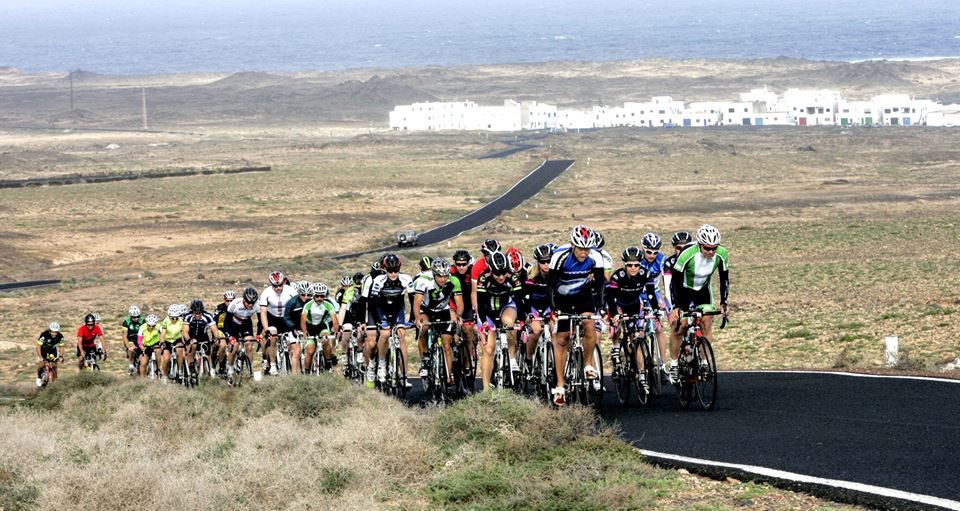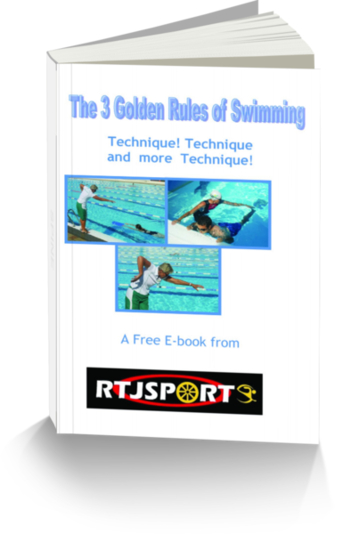Beginner
OK, so you’ve taken the plunge and decided you are going to join a rapidly growing group of individuals who want to do a Triathlon…..well done, you have made a great decision.
Triathlon is a fantastic sport but as a novice it can also be quite daunting because you now have what seems like a very complicated list of things to think about. The idea of this guide is to help you plan and work through that list and hopefully make it seem much less complicated ….after all it is only a swim, a bike and a run!
So, what next???
 Choosing your First Event
Choosing your First Event
Taking that first step in deciding to do a Triathlon and registering for your first event can be a daunting prospect so here are a few pointers to help you with your decision.
Triathlons are growing massively in popularity and as such there are now a multitude of different distance events to choose from, however the main categories are as follows:
Super Sprint => Swim 400m / Bike 10km / Run 2.5km
Sprint => Swim 750m / Bike 20km / Run 5km
Olympic Distance => Swim 1500m / Bike 40km / Run 10km
Middle Distance (Half Ironman or 70.3) => Swim 1.2miles / Bike 56miles / Run 13.1miles
Ironman => Swim 2.4miles / Bike 112miles / Run 26.2miles……..never say never!
Beginner’s Tips
Your current ‘athletic prowess’ and a realistic view on where you might be able to get to between now and when your intended event will take place.
How much time do you have to train per week?
When will you do your training – a.m. or p.m. – will there be sufficient light at the time of year you will be training?
Do you have a winter or summer of training ahead of you – winter training is notoriously hard.
Is your plan to train in a pool and gym or outside – many people find outdoor training more inspiring?
Do you want a pool swim for your event or an open water swim – if you have not swum open water before it can be quite daunting and it is VERY different from swimming in a pool.
What equipment do you have available to you – many longer distance events will not allow you to take part unless you have a road bike. Many open water swims will require that you have a wetsuit.
Do you want to do the whole event on your own – many events have options for teams.
What is your event budget – some Entrance Fees can be quite substantial and you will also need to factor in getting to the event and perhaps overnight accommodation. Smaller local events will usually have lower registration fees.
Do you have a Triathlon Club nearby that you can join – this can often help with motivation to train?
This is by no means an exhaustive list and there are many considerations to factor in to your decision but there is a wealth of written information, Forums and guides available that can be very useful – Triathletes are generally speaking very willing to help others looking to enter the sport.
My Golden Rule is to be realistic in what you as a novice can achieve in your first event; this will help you enjoy your training AND Race Day…..and leave you wanting to do it again!
Equipment for Beginners
Triathletes are notorious for ‘loving their toys’ and indeed there are a plethora of pieces of equipment and clothing that will help with training and Race Day. However, when you break the 3 disciplines down, there are a few basic requirements as a beginner that you cannot do without but you can choose the extent to which you invest in your kit.
In the following section we will address these basic requirements ‘Essentials’ and suggest other kit that is ‘Nice to have’. This information will help you make decisions about where to invest and how to kit yourself out for less.
Swim – Essentials
Swimming costume / Swimming trunks / TriSuit (see the Tri2O guide to TriSuits) – even if you are taking part in an open water event requiring wetsuits, then you will still need one of the above.
Swim Hat – not essential for training but most events will require you to wear one so you may as well get used to it….and they keep you warmer in open water.
Goggles – it is worth investing in a pair of reasonable goggles that do not fog up.
Triathlon Wetsuit – most open water Triathlon events in UK will require you to wear a wetsuit (see the Tri2O guide to Wetsuits). Wetsuits can cost anything up to £600+ but consider buying a second hand suit as long as it fits you well / buy the previous year’s range as they will always be heavily reduced or hire a suit if you do not want to make the investment. The Golden Rule with a swimming wetsuit is to get the right fit.
 Swim – Nice to have
Swim – Nice to have
Spare goggles – always useful to have a spare pair just in case your others break or develop a leak.
Anti-Fog solution – there is nothing worse than a pair of goggles that are constantly fogged up….and if you are swimming in open water this can really hinder your sighting ability and potentially be dangerous.
Earplugs – some swimmers find it uncomfortable to swim without earplugs.
Anti-Chafe lubricant – if you have a Wetsuit or TriSuit that causes chafing it can be very uncomfortable, especially over a longer distance; these lubricants are generally applied to the neck and underarm area.
Bike – Essentials
Bike – Most events will allow you to participate on any kind of bicycle as long as it is road-worthy, however it is always worth checking their rules before assuming anything. If you are ‘dipping a toe’ in Triathlon to get a feel for it, then you might not want to go out and invest in a new bike, which can cost anything up to £7000 for the top of the range models. Here are a few options:
As a novice try to use an existing bike (non-road bike): if the bike is not a road bike then consider changing knobbly tyres for narrower road tyres and remove any redundant accessories such as racks, mudguards, lights and lock brackets etc. You may need to add a bottle holder.
If you have an existing road bike: then consider changing old tyres and inner tubes and get the gears and brakes checked to ensure efficient operation. If you really want to get serious then consider adding some clip-on Tri Bars and clip-in road pedals (but make sure you practice with these well in advance of race day).
Borrow a bike: if you have access to a road bike through friends or family then this might work well for you; just make sure you have ridden the bike before your event so you are familiar with the gears and brakes etc.
If you are ready to invest in a new bike then the options are endless and the only limiting factor will be your budget. If you are working on a limited budget then consider the following:
Buy a second-hand bike: second-hand bikes are plentiful in the Classified Ads sections of magazines, newspapers and online. Do your research and make sure the bike is in a good state of repair – if in doubt, get an experienced person to check it over for you.
Buy a previous year’s model: Retailers and manufacturers will always reduce their older models to make way for the current range….and the only change from one year to the next may be something as basic as the colour!
Cycle to Work schemes: if your company offers this scheme it can be a great way of saving ££s on the price of the bike or get a good deal on accessories. If they don’t operate the scheme then ask them to do it – details at www.cyclescheme.co.uk.
The Golden rule with your bike is to ensure that the fit is right for you; this will help to avoid injury / discomfort and improve performance both on the bike and on your run. Most decent bike shops will help to make sure the bike fits you properly.
Helmet – every Triathlon event will require that you wear a helmet and many will check the quality of it before they let you race. New helmets come in a range of prices but do not have to be expensive to be effective. Ensure the fit is good and be VERY wary if buying second-hand because defects are often hard to spot.
Water bottle – when you exit the water you may be thirsty so it is important to have a drink available on the bike to avoid dehydration. We will talk about what to put in the bottle later on. You may have to add a water bottle holder to your bike as they do not always come fitted.
Bike spares – it is essential to carry a very basic amount of spares in the event that you encounter a problem whilst on the bike:
Puncture repair kit or spare inner-tube.
Tyre levers for removing the tyre.
Pump.
Shoes – you can either use specific cycling shoes (and pedals) which you will have to change out of for the run or you can wear trainers which can be left on for the run.
Bike – Nice to have
Cycling clothing / triathlon clothing (see the Tri2O guide to TriSuits):
Cycling shorts or a Tri-suit will have additional padding for added comfort on the bike.
Cycling shoes that clip in to the pedals will help improve performance on the bike – but make sure you practice with them to avoid injury.
Cycling gloves will help prevent blisters on your hands and generally improve comfort and warmth.
Cycling jersey is designed to be tight fitting and not flap about whilst also providing good ventilation; this can also be worn on the run.
Socks will provide added protection against blisters on the bike and run; some athletes prefer not to wear them.
A Mini-tool is a useful addition as it will typically have Allen Key attachments and other useful tools for fixing minor issues.
CO2 cartridges are used to rapidly re-inflate the tyre after a puncture – make sure you practice with one before ditching your pump.
Track pump provides easy and accurate inflation of tyres before you train or race.
Race wheels are designed to be very light and aerodynamic to improve bike speed; they can be very expensive and gains are marginal at a novice level.
Sport glasses provide protection against the sun and flying debris and dust.
Race belts are a useful means of attaching your race number without having to use safety pins – they can also be turned from your back to your front when you transition from bike to run.
Run – Essentials
Trainers / running shoes – are the only real essential item for your run; make sure that they fit well to avoid injury.
Running shorts or Tri-shorts designed for running will ensure a comfortable run and help avoid any painful chafing.
Running top or Tri-top designed for running will ensure a comfortable run and help avoid any painful chafing…..Vaseline or an anti-chafing lubricant may still be required for longer runs.
 Run – Nice to have
Run – Nice to have
Running caps or visors are lightweight and well ventilated to keep you protected from the sun and stop you from over-heating.
Running socks are designed with padding in all the right places to provide added cushioning and prevention against blisters – look out for socks that are fitted specifically for L & R feet for a better fit.
Sport Glasses / Sunglasses offer added protection against the glare of the sun or provide better visibility in low light conditions and can often be used on bike and run – look out for the glasses with interchangeable lenses for different light conditions.
Running belts are a great way of carrying the nutrition you will require on your run whilst keeping your hands and pockets free.
Running jacket or Gilet can be very useful if the weather turns colder – remember that you may feel the cold more as your body gets tired.
Transition
A towel is always useful in transition for drying yourself after the swim or standing on when you put bike or running shoes on to avoid getting stones in your shoes….and if you choose a nice bright one then you can easily spot your area in transition too!
Talcum Powder is fantastic for getting damp feet in to socks or cycling / running shoes. Give your socks or shoes a good puff of powder just before the event to avoid having to mess about in the heat of the T1 or T2 moment.
A clear plastic box in which you can keep all of your race day essentials will help ensure that you don’t forget any vital kit and keep it all in one easy to find place – choose one with a lid just in case it rains.
Sun Screen – be prepared for sunny conditions and remember you may need to top up after your swim.
Anti-chafing lubricant or Vaseline is another useful addition to your transition kit.
Read our beginners guide to mastering transitions
Nutrition
Nutrition is a very personal choice and there are hundreds of different sport nutrition products on the market. Each individual’s nutritional requirements during exercise will vary and will obviously increase the longer they are active….it is worth spending some time thinking about how you will keep yourself energised and hydrated during your event.
Sports nutrition products come in 3 main forms => Drinks, Gels & Solid Bars and are aimed at providing sustenance pre, during and post exercise.
Pre-race nutrition – will help to provide a store of slow release energy for use during your race. Bars, gels and liquids are used for this purpose.
Race nutrition – will mainly provide slow release and immediate energy for the body during exercise. Products come in bar, gel and liquid form and can often be used in conjunction with each other.
Post race (recovery) nutrition – is designed to help refuel muscles that have been working hard during exercise. These products are typically in a bar or liquid form and should be eaten within 20 minutes of finishing (always read the manufacturer’s instructions for best results).
There are no set rules regarding nutrition and what works for one individual may well not work for another. You may find that your body reacts better to less highly ‘manufactured’ sources of energy such as bananas, dried fruit or even jelly babies but whatever your preference, the golden rule is to make sure you practice with it in training before your event.
 Beginners’ Training Plan
Beginners’ Training Plan
So….you’ve got the kit, chosen your event and paid the entry fee – now it’s time to start training!
Effective, regular training is vital to the achievement of your goals, whether you are aiming for a specific finish time or ‘just’ aiming to finish. Here are a few considerations to keep in mind when planning your training:
Do you prefer to train alone or with a group, or a mixture of both? – Consider finding yourself some training partners for each of the individual disciplines (swim club, cycling club or running club) or join a Triathlon Club. Most Triathlon clubs will always be welcoming to new members and offer advice on all aspects of the sport as well as holding group training sessions. Triathlon Clubs will also typically hold different training sessions for varying levels of experience, ensuring that even as a novice, help is available.
Will you be more disciplined if you have a formal training plan in place? – There are many online training plans available, both generic and tailored:
Generic plans will typically provide a training plan for a set number of weeks and will have a specific end-goal in mind (Sprint distance, Olympic distance etc.); these are available to purchase or for free download on the internet.
Tailored training plans can be purchased online and these will be built around your specific circumstances and end goals. You might also consider working with your own personal triathlon coach who can be found online, through your local club or in the classified section of the triathlon publications.
Do you prefer to train indoors or outside? – Whilst the majority of triathlon training can be achieved indoors, at the gym or at home, there is no substitute for getting out and hitting the roads or trails. If your event includes an open water swim then make sure you have swum open water before your event as it is VERY different from swimming in a pool.
Be realistic with your training plan – Create a plan that factors in your family, work and social commitments although you might find you have to modify some of these to accommodate your plan. If you have pre-arranged dates when you will not be able to train then build these in as rest days.
Get creative with your plan – Think about how you might incorporate training in to your normal daily routine such as cycling or running to work or swimming in a lunch break or before work.
Seek advice – there is a myriad of training advice available both online and in the Triathlon publications. If you have specific questions there are a number of forums and guides online where you can ask for advice from fellow triathletes.
Train for all aspects of your event – make sure you incorporate all of the different aspects of your event in to your training plan, such as: swim, bike, run, transitions from each discipline to the next (this is called a ‘brick’ session), nutrition and hydration, clothing, punctures on the bike etc.
Whilst training for your event will be hard work, it should also be fun. Every triathlete especially a beginner will have good days, bad days and days when it just isn’t going to happen….if you do miss a session, don’t beat yourself up about it, just enjoy the rest.








